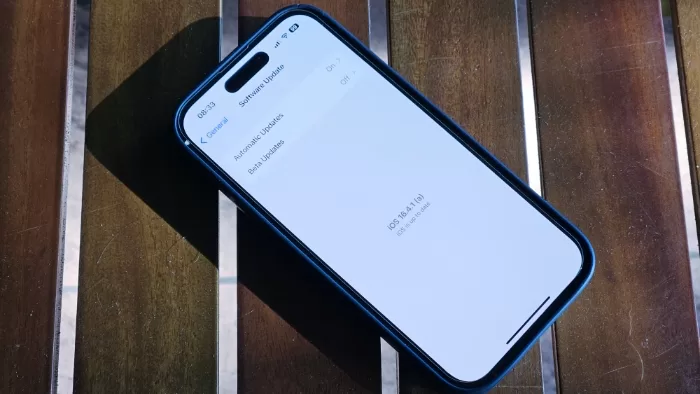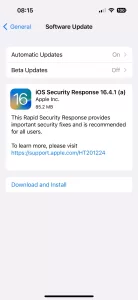
Another day, another iPhone update. But this one’s a bit different, as it’s a “rapid security update”. Here’s what you need to know about why this is a bit different from your usual iPhone update.
How Do I? covers the basics, because we’ve all got to start somewhere.
The latest update release for iOS — that’s the software that runs your iPhone — is, numerically speaking, iOS 16.4.1(a).
Not a great name for it to introduce itself to others at parties, for sure, but it’s also a different type of update.
Here’s how it typically goes. Apple will release a smaller update for iOS, (so, for example, from iOS 16.4.0 to 16.4.1) with a range of bug fixes and maybe, if you’re lucky, the implementation of a promised feature. For bigger updates that make more substantial changes to the way you use your phone, you get a jump in actual release numbers. So for example, we can expect iOS 17 to appear later this year, most likely alongside the iPhone 15 family.
But what happens when there’s a letter suffix at the end of the update? That’s when you get a rapid security update.
What is an iOS rapid security update?

I’m not going to reinvent the wheel here – I’ve got it on good authority there’s plenty of prior art there — and instead quote Apple directly:
Rapid Security Responses are a new type of software release for iPhone, iPad, and Mac. They deliver important security improvements between software updates — for example, improvements to the Safari web browser, the WebKit framework stack, or other critical system libraries. They may also be used to mitigate some security issues more quickly, such as issues that might have been exploited or reported to exist “in the wild.”
Or in simpler terms, they’re security updates for issues that could be quite big, but that don’t come bundled in with larger iOS point upgrades, delivered quickly.
Hence, you know, “Rapid” “Security” “Update”.
How do I apply the new iOS Rapid Security Update?
Part of the way these updates work is to be automatically applied on most iPhones unless you’ve fiddled with the settings, but you can check manually and force matters if that’s your style.
- Open Settings
- Tap on “General”
- Tap on “Software Update”
- Automatic updates should be set to “On”, but just opening this page will also make your iPhone check for updates.
- If there’s an update available, download it. It’s not called a security update for nothing, you know. A reboot may be involved, so don’t do this if you’re waiting on an urgent phone call or anything.
- Allow your phone to reboot, and you’re away.
I don’t see the update for my iPhone at all, and I’m not on iOS 16.4.1(a). Why?
Chances are, you’re on a much older iPhone that’s stopped getting full iOS updates.
Maybe turn it into just an iPod/Game player, and upgrade for security’s sake.
In the interests of balance, I should point out that other smartphone models apart from iPhones are available.
What security problems does this iOS Rapid Security Update fix?
Great question.
Just like every other time anyone says “great question” to you, it’s because they’re stalling for time.
For once, the security notes for this update don’t actually say anything about what they’re fixing, instead linking to a more generic page describing what a rapid security update is.
My best guess — and it’s a guess — is that it’s fixing an in-the-wild problem that Apple wants to fix for, but not publicise as there will be iPhones that don’t apply this update immediately and might be at risk if it’s clear what the problem is.
But that’s just a guess. Only Apple’s security team knows for sure, and they don’t tend to do media interviews.
Can I ignore this security update?
Yeah, you can, though I can’t really think why you would.
If you disable automatic updates, they won’t be applied, though Apple does note that rapid security updates do get rolled into full point releases over time anyway. So the next time you do update, it’ll be part of the software anyway.



